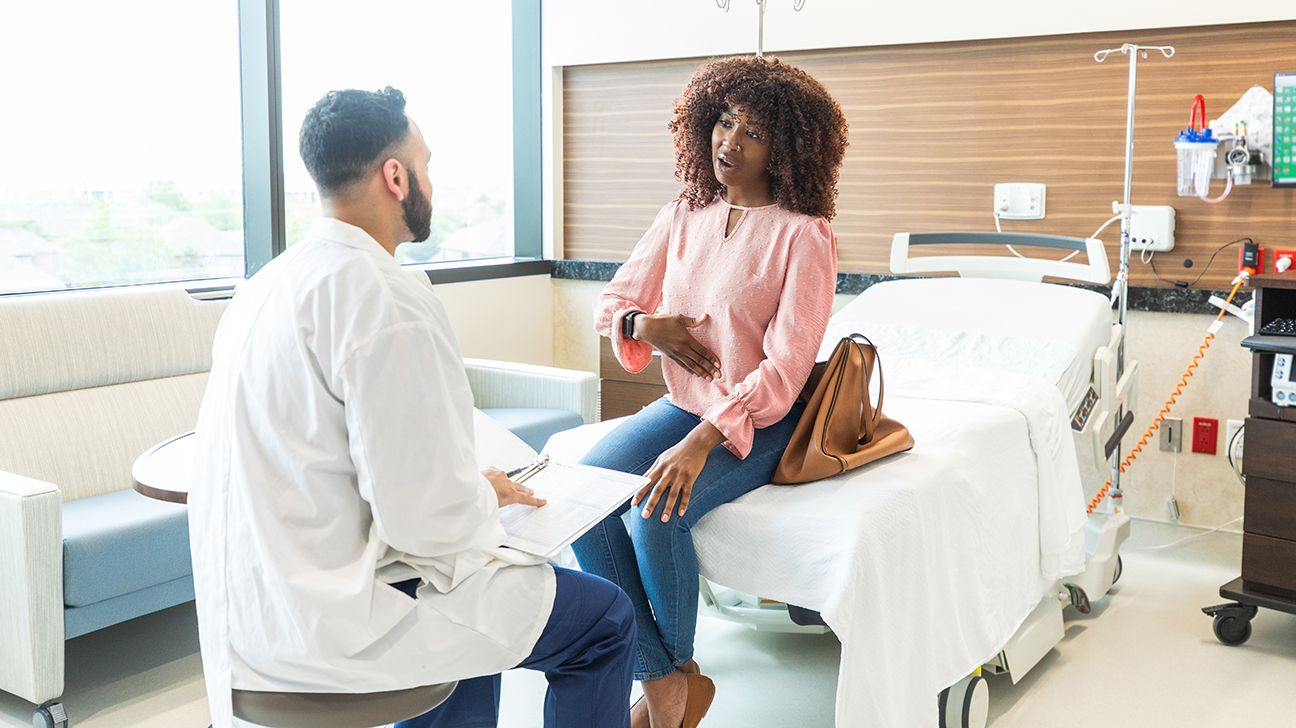Fatty liver disease typically presents the same in both females and males. However, research has found that the risk for females rises significantly after menopause.
Though fatty liver disease is much more common in men than women, the risk of the disease rises significantly in postmenopausal females. Researchers think this may be due to hormonal shifts, including an increase in testosterone levels in females later in life.
Here’s what else you should know about fatty liver disease, including symptoms and how to prevent or manage the condition.
Language matters
In this article, we talk about fatty liver disease in people assigned female at birth. It’s important to note that not everyone assigned female at birth identifies with the label “female.” However, at times, we use “male” or “female” to reflect the language in a study or statistic or to ensure people can find this article with the terms they search.
When possible, we aim to be inclusive and create content that reflects the diversity of our readers.

Both nonalcoholic fatty liver diseases (NAFLD), and alcohol-associated liver disease (ALD) exhibit
In
If unmanaged, fatty liver disease can cause cirrhosis, a condition involving scarring of the liver. Cirrhosis may cause symptoms
- stomach pain
- unexpected weight loss
- loss of appetite
- nausea
- yellow skin (jaundice)
- dark colored pee
- pale stools
- visible web-like clusters of blood vessels
- skin itchiness
- swelling of the legs (edema)
- disorientation
Cirrhosis can be life threatening. If you’re experiencing some of the above symptoms, you should speak with a doctor as soon as possible.
Though males are much more likely than females to get fatty liver disease, the risk for females
In a
For this reason, researchers think there’s significant evidence to suggest that sex hormones play a role in the development of fatty liver disease. Specifically, an increase in serum testosterone levels appears to raise the risk of developing liver disease.
There’s also an
Menopause is a
- having overweight or obesity
- type 2 diabetes
- older age (particularly in females)
- a family history of the disease
- long-term use of certain drugs, such as methotrexate, tamoxifen, and amiodarone
- pregnancy complications, like gestational diabetes
- a history of viral hepatitis C infections
- sleep apnea
- exposure to toxic substances or chemicals
- rare genetic disorders like Wilson’s disease
According to the National Institute of Health (NIH), up to
MASLD is also most common among certain racial and ethnic groups, such as Hispanic people, followed by non-Hispanic white people and Asian Americans. It’s less common among non-Hispanic Black Americans.
The main treatment for fatty liver disease includes healthy lifestyle changes, which may include:
- doing regular physical activity, at least
30 minutes a day most days - eating a diet rich in nutrients and low in saturated and trans fats
- cutting calories to attain a moderate weight
- limiting or abstaining from alcohol if you do drink
- avoiding, where possible, medications or supplements that may damage the liver over time (i.e., ibuprofen)
In March 2024, the
If the disease advances, a doctor may recommend other treatments, including:
- medication to treat underlying conditions like high cholesterol or diabetes
- surgical procedures like bariatric surgery for weight loss
- a liver transplant, as a last resort
Though menopause is a natural process that doesn’t require a specific treatment, managing some side effects can help ease discomfort and reduce the risk of other health complications.
Some ways to manage menopause include:
- staying well-hydrated
- dressing in breathable layers to manage hot flashes
- getting plenty of sleep
- getting sufficient exercise
- practicing relaxation techniques like yoga, meditation, or deep breathing to reduce stress
- quitting smoking (which can worsen menopausal symptoms)
- using vaginal lubricants to address dryness or discomfort during sex
- doing pelvic floor exercises (Kegels) to prevent incontinence
- taking plant-based estrogen (phytoestrogens)
- undergoing menopausal hormone therapy (MHT)
- taking supplements such as soy, black cohosh, or red clover
Experts recommend speaking with a doctor before introducing any new supplements to your diet to avoid any complications.
Like with treating fatty liver disease, the main way to manage menopause is to maintain a healthy, well-rounded lifestyle.
Those with severe menopause symptoms may also want to consider
What is your life expectancy with fatty liver disease?
According to a 2022 study, people with fatty liver disease have a lower life expectancy of around
What hurts when you have a fatty liver?
If you have fatty liver disease, you may find that the upper right side of your abdomen hurts, resulting in frequent pain, although this is rare. In most instances, people will not experience any symptoms of fatty liver disease.
Is fatty liver dangerous?
Fatty liver itself is not dangerous. However, it can result in a life threatening condition called cirrhosis (scarring of the liver) if left untreated.
Fatty liver disease often onsets with no visible symptoms in both men and women. Although females have a much lower risk of the disease compared to males, the risk of contracting the disease rises significantly for postmenopausal women.
Maintaining a healthy lifestyle, including regular diet and exercise, is the best way to treat liver disease and manage postmenopausal symptoms.
